-
 Bitcoin
Bitcoin $106,754.6083
1.33% -
 Ethereum
Ethereum $2,625.8249
3.80% -
 Tether USDt
Tether USDt $1.0001
-0.03% -
 XRP
XRP $2.1891
1.67% -
 BNB
BNB $654.5220
0.66% -
 Solana
Solana $156.9428
7.28% -
 USDC
USDC $0.9998
0.00% -
 Dogecoin
Dogecoin $0.1780
1.14% -
 TRON
TRON $0.2706
-0.16% -
 Cardano
Cardano $0.6470
2.77% -
 Hyperliquid
Hyperliquid $44.6467
10.24% -
 Sui
Sui $3.1128
3.86% -
 Bitcoin Cash
Bitcoin Cash $455.7646
3.00% -
 Chainlink
Chainlink $13.6858
4.08% -
 UNUS SED LEO
UNUS SED LEO $9.2682
0.21% -
 Avalanche
Avalanche $19.7433
3.79% -
 Stellar
Stellar $0.2616
1.64% -
 Toncoin
Toncoin $3.0222
2.19% -
 Shiba Inu
Shiba Inu $0.0...01220
1.49% -
 Hedera
Hedera $0.1580
2.75% -
 Litecoin
Litecoin $87.4964
2.29% -
 Polkadot
Polkadot $3.8958
3.05% -
 Ethena USDe
Ethena USDe $1.0000
-0.04% -
 Monero
Monero $317.2263
0.26% -
 Bitget Token
Bitget Token $4.5985
1.68% -
 Dai
Dai $0.9999
0.00% -
 Pepe
Pepe $0.0...01140
2.44% -
 Uniswap
Uniswap $7.6065
5.29% -
 Pi
Pi $0.6042
-2.00% -
 Aave
Aave $289.6343
6.02%
How to analyze the sideways trend without rebounding after RSI is oversold?
In sideways crypto markets, oversold RSI often fails to trigger rebounds due to neutral sentiment, low volume, and weak support levels.
Jun 18, 2025 at 05:56 am
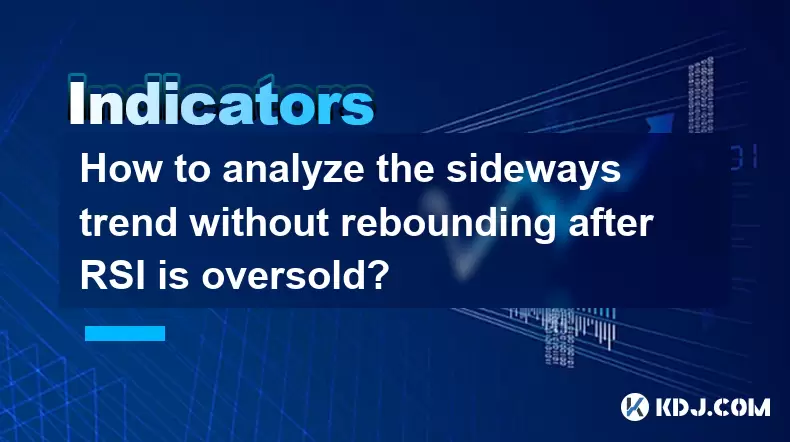
Understanding the Sideways Trend in Cryptocurrency Markets
In cryptocurrency trading, a sideways trend, also known as a horizontal consolidation phase, occurs when prices fluctuate within a relatively narrow range without showing a clear upward or downward direction. During such phases, traders often rely on technical indicators like the Relative Strength Index (RSI) to determine potential reversals or continuations. However, one common challenge is identifying whether the price will rebound after RSI signals an oversold condition.
What makes the sideways trend unique? Unlike trending markets, where momentum can be gauged more easily, sideways trends lack directional bias. This means that even if RSI dips below 30 — typically considered oversold — there's no guarantee of a bounce back.
Why Oversold RSI May Not Trigger a Rebound
The RSI indicator measures the speed and change of price movements, helping traders identify overbought or oversold conditions. In theory, an RSI below 30 suggests that the asset may be oversold and due for a rally. However, during strong consolidations or bearish market structures, this signal can be misleading.
- Market sentiment remains neutral or bearish, so buyers don’t step in despite oversold readings.
- Volume dries up, indicating low interest from both bulls and bears.
- Support levels fail repeatedly, leading to false breakouts and trapping traders who expect a bounce.
This scenario is particularly common in altcoins or less liquid cryptocurrencies where institutional participation is minimal, and retail traders dominate the order flow.
Key Indicators to Confirm or Dismiss Oversold Signals
When RSI is oversold but the price doesn't rebound, it's crucial to look beyond just the RSI line. Incorporating other tools into your analysis helps filter out false signals and improves decision-making accuracy.
- Moving Averages: Observe if price is consistently below key moving averages like the 50 EMA or 200 EMA.
- Volume Profile: Check whether volume increases during pullbacks; absence of buying pressure confirms weakness.
- Order Book Depth: Analyze liquidity at support and resistance zones to anticipate breakdowns or breakouts.
- Price Action Patterns: Look for candlestick formations like inside bars or bearish engulfing patterns near support.
These tools work together to give a clearer picture of whether the oversold RSI is a trap or a genuine reversal opportunity.
How to Visually Identify Market Structure in a Sideways Trend
Visual pattern recognition plays a significant role in confirming whether a sideways trend is likely to continue or reverse. Here’s how you can analyze chart structure:
- Draw horizontal support and resistance lines based on previous swing highs and lows.
- Identify zones of value where price has spent most time consolidating.
- Look for repeated rejections at similar price levels, which indicate strong institutional levels.
- Observe how price reacts to major moving averages like the 100 SMA or 200 SMA during consolidation.
If price continues to make lower highs and fails to reclaim key levels after multiple attempts, it suggests that the sideways trend might evolve into a downtrend rather than a bullish reversal.
Practical Steps to Trade a Non-Reversing Oversold Scenario
When RSI is oversold but the price refuses to bounce, consider these steps to manage risk and potentially profit from the continuation of the consolidation or breakdown:
- Avoid buying blindly on oversold readings unless confirmed by confluence factors like strong support or bullish divergence.
- Use limit orders below key demand zones to capture potential bounces with tight stop losses.
- Monitor volume spikes on the downside — increased selling pressure often precedes a breakdown.
- Place sell-stop orders beneath support levels to enter short positions if a breakdown appears imminent.
- Set realistic take-profit targets based on average daily range or measured move projections.
Remember, the goal here isn't to predict the exact turning point but to position yourself with favorable risk-to-reward ratios while respecting the current market structure.
Frequently Asked Questions
Q: Can RSI alone be trusted in sideways markets?
A: No, RSI should not be used in isolation. It needs confirmation from volume, price action, and support/resistance levels to avoid false signals.
Q: What timeframe is best for analyzing non-rebounding oversold scenarios?
A: Higher timeframes like the 4-hour or daily charts offer more reliable context. Lower timeframes are prone to noise and fakeouts.
Q: How do I differentiate between a healthy pullback and a failed bounce in consolidation?
A: Healthy pullbacks usually show decreasing volume and minor corrections toward key moving averages. Failed bounces occur with strong rejection candles and increasing volume.
Q: Should I close my long position immediately if RSI is oversold but price doesn’t rebound?
A: Not necessarily. Evaluate if the price is still holding above critical support. If so, consider adjusting stop loss and target levels instead of exiting entirely.
Disclaimer:info@kdj.com
The information provided is not trading advice. kdj.com does not assume any responsibility for any investments made based on the information provided in this article. Cryptocurrencies are highly volatile and it is highly recommended that you invest with caution after thorough research!
If you believe that the content used on this website infringes your copyright, please contact us immediately (info@kdj.com) and we will delete it promptly.
- Pi Network, KYC Sync, and Pi2Day: A Deep Dive into the Latest Developments
- 2025-06-20 18:45:13
- Ethereum, Bitcoin, and the Price Prediction Game: What's Hot Now?
- 2025-06-20 18:25:13
- Bitcoin Price Breakout Imminent? Decoding the Crypto Market's Next Big Move
- 2025-06-20 18:45:13
- Cracking the Cross-Chain Code: Interoperability and Web3 UX
- 2025-06-20 18:25:13
- Blockchain, P2P Games, and Marketplaces: A New Era of On-Chain Economies
- 2025-06-20 18:57:14
- Arizona's Bitcoin Reserve Bill: Senate Vote Revives Crypto Debate
- 2025-06-20 18:57:14
Related knowledge
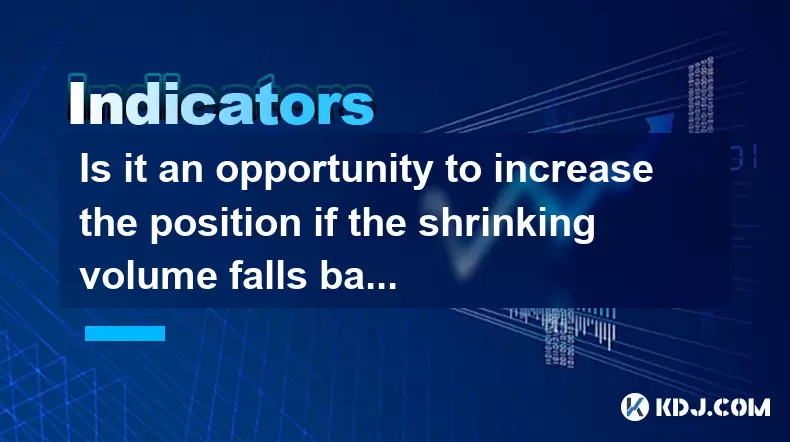
Is it an opportunity to increase the position if the shrinking volume falls back to the rising trend line?
Jun 20,2025 at 06:22pm
Understanding the Shrinking Volume in Cryptocurrency TradingIn cryptocurrency trading, volume is one of the most critical indicators used to confirm price movements and trends. When traders observe a scenario where volume shrinks during a pullback, it can signal either a lack of selling pressure or an imminent reversal. This phenomenon often occurs when...
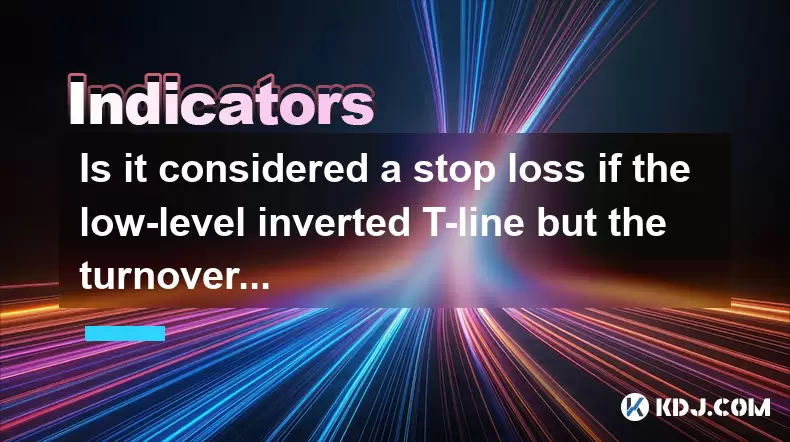
Is it considered a stop loss if the low-level inverted T-line but the turnover rate is extremely low?
Jun 20,2025 at 04:49pm
Understanding the Low-Level Inverted T-Line in Cryptocurrency ChartsIn technical analysis within the cryptocurrency market, candlestick patterns are crucial indicators for traders to predict potential price movements. The low-level inverted T-line is a specific type of candlestick pattern that often raises questions among traders. This pattern typically...
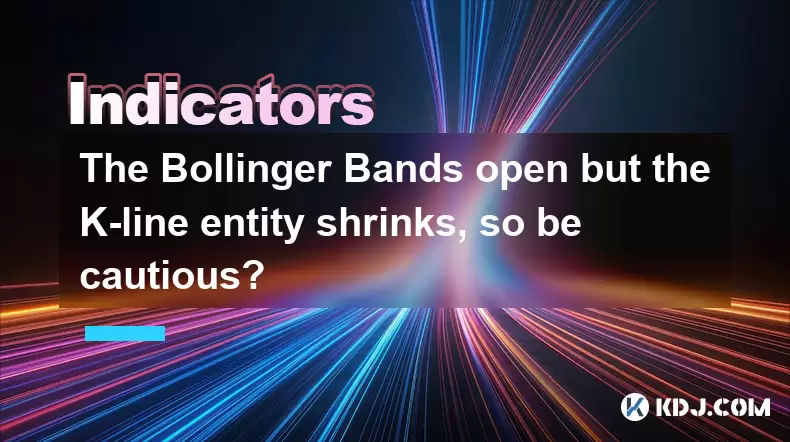
The Bollinger Bands open but the K-line entity shrinks, so be cautious?
Jun 20,2025 at 06:08pm
Understanding the Bollinger Bands and K-Line RelationshipBollinger Bands are a popular technical analysis tool used in cryptocurrency trading. They consist of a moving average (usually 20-period) with two standard deviation lines plotted above and below it. These bands dynamically adjust to price volatility, expanding when volatility increases and contr...
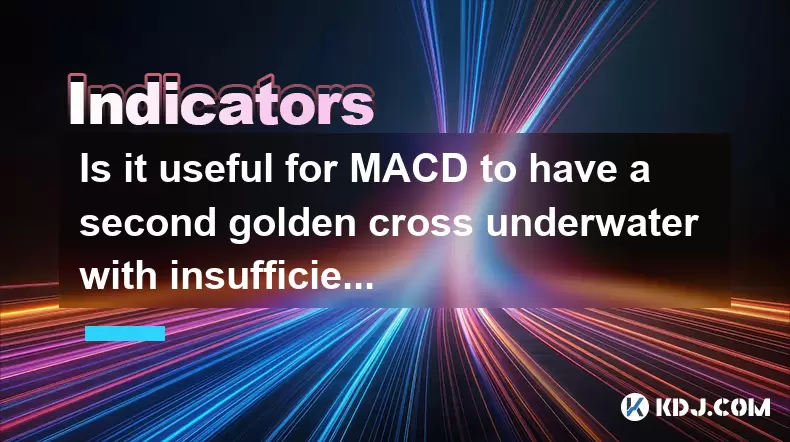
Is it useful for MACD to have a second golden cross underwater with insufficient volume?
Jun 20,2025 at 06:49pm
Understanding the MACD and Its Golden CrossThe Moving Average Convergence Divergence (MACD) is a popular technical analysis tool used by traders to identify potential buy or sell signals. It consists of three components: the MACD line, the signal line, and the histogram. The golden cross occurs when the MACD line crosses above the signal line, often see...
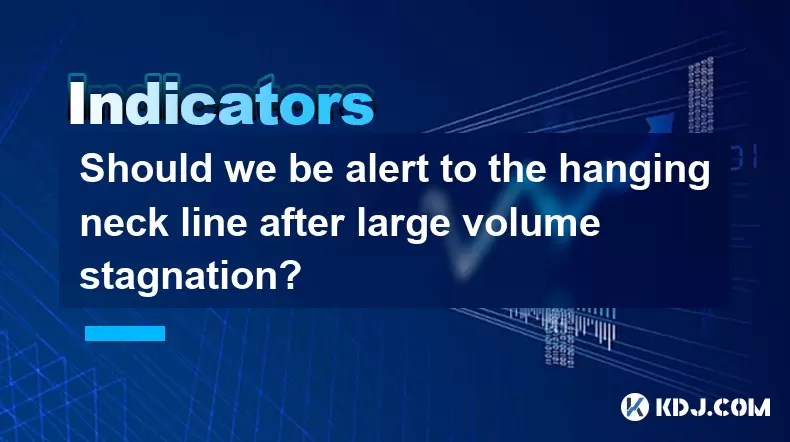
Should we be alert to the hanging neck line after large volume stagnation?
Jun 20,2025 at 07:01pm
Understanding the Hanging Neck Line in Cryptocurrency TradingThe hanging neck line is a technical analysis pattern that often appears on candlestick charts and is considered a bearish reversal signal. In the context of cryptocurrency trading, recognizing this formation can be crucial for traders looking to avoid potential price drops after a period of u...

Is it a real drop when KDJ crosses but the trading volume shrinks?
Jun 20,2025 at 03:49pm
Understanding KDJ and Its Role in Cryptocurrency TradingIn the realm of cryptocurrency trading, technical analysis plays a crucial role in identifying potential price movements. The KDJ indicator, also known as the stochastic oscillator with a J line added for momentum confirmation, is widely used by traders to gauge overbought or oversold conditions. I...

Is it an opportunity to increase the position if the shrinking volume falls back to the rising trend line?
Jun 20,2025 at 06:22pm
Understanding the Shrinking Volume in Cryptocurrency TradingIn cryptocurrency trading, volume is one of the most critical indicators used to confirm price movements and trends. When traders observe a scenario where volume shrinks during a pullback, it can signal either a lack of selling pressure or an imminent reversal. This phenomenon often occurs when...

Is it considered a stop loss if the low-level inverted T-line but the turnover rate is extremely low?
Jun 20,2025 at 04:49pm
Understanding the Low-Level Inverted T-Line in Cryptocurrency ChartsIn technical analysis within the cryptocurrency market, candlestick patterns are crucial indicators for traders to predict potential price movements. The low-level inverted T-line is a specific type of candlestick pattern that often raises questions among traders. This pattern typically...

The Bollinger Bands open but the K-line entity shrinks, so be cautious?
Jun 20,2025 at 06:08pm
Understanding the Bollinger Bands and K-Line RelationshipBollinger Bands are a popular technical analysis tool used in cryptocurrency trading. They consist of a moving average (usually 20-period) with two standard deviation lines plotted above and below it. These bands dynamically adjust to price volatility, expanding when volatility increases and contr...

Is it useful for MACD to have a second golden cross underwater with insufficient volume?
Jun 20,2025 at 06:49pm
Understanding the MACD and Its Golden CrossThe Moving Average Convergence Divergence (MACD) is a popular technical analysis tool used by traders to identify potential buy or sell signals. It consists of three components: the MACD line, the signal line, and the histogram. The golden cross occurs when the MACD line crosses above the signal line, often see...

Should we be alert to the hanging neck line after large volume stagnation?
Jun 20,2025 at 07:01pm
Understanding the Hanging Neck Line in Cryptocurrency TradingThe hanging neck line is a technical analysis pattern that often appears on candlestick charts and is considered a bearish reversal signal. In the context of cryptocurrency trading, recognizing this formation can be crucial for traders looking to avoid potential price drops after a period of u...

Is it a real drop when KDJ crosses but the trading volume shrinks?
Jun 20,2025 at 03:49pm
Understanding KDJ and Its Role in Cryptocurrency TradingIn the realm of cryptocurrency trading, technical analysis plays a crucial role in identifying potential price movements. The KDJ indicator, also known as the stochastic oscillator with a J line added for momentum confirmation, is widely used by traders to gauge overbought or oversold conditions. I...
See all articles

























































































